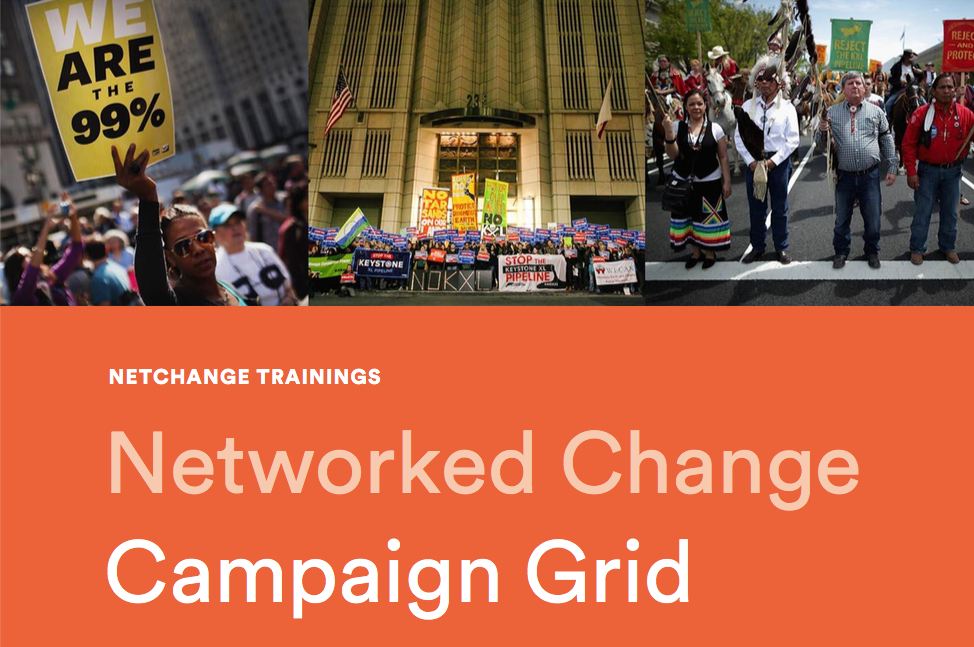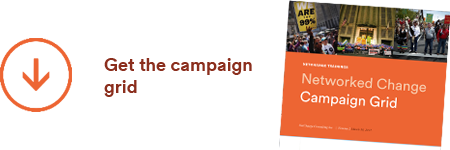In June of 2016, we released our Networked Change Report, a deep dive into the common patterns that drove 47 advocacy high-impact advocacy campaigns to succeed where so many others fail.
The model that emerged from our research, directed-network campaigning, was centered around the application of four key principles: Opening to grassroots power, building cross-movement network hubs, framing a compelling cause and running with focus and discipline.
We have since worked with groups around the world interested in implementing the directed-network campaigning model into their campaign design process. In the course of this work, we developed a set of worksheets that help groups map their existing approaches, compare them to those of top performing campaigns and realize what gaps they still need to fill to optimize their strategy and tactics.
To show our clients how others have made directed-network campaigning live in their work, we have taken pains to lay out the detailed practices behind the campaign to stop the Keystone XL pipeline and the Fight for 15$, both top-performers in our study.
The result of all of this workshopping is our Campaign Design Grid, a field-tested tool that we are now offering as a free download to change makers who want to integrate campaign innovation and make sure they are lining up with 21st century best practices.
“The Grid helped ground the thinking from your report directly into our campaigns. I use it religiously for every campaign idea we explore now.” — Meredith Horowski, Campaigns Director, GlobalZero.
Try the tool and let us know how it works out for you and what you find challenging. We are continually trying to upgrade our tools and trainings with your input.
We wish you luck as you fight to make the world a better place!
The Campaign Design Grid is available as a free download here.










